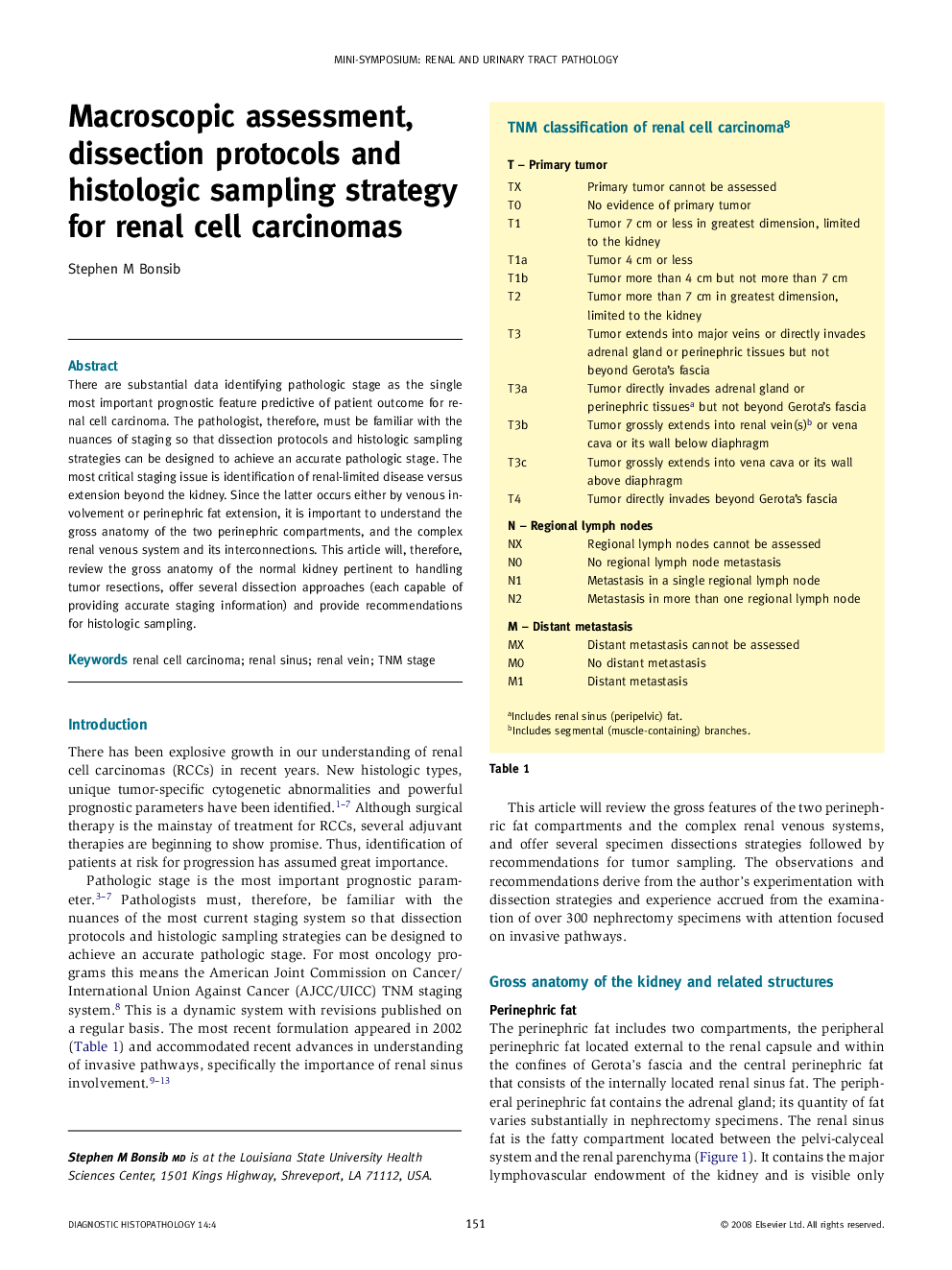| Article ID | Journal | Published Year | Pages | File Type |
|---|---|---|---|---|
| 4131755 | Diagnostic Histopathology | 2008 | 6 Pages |
There are substantial data identifying pathologic stage as the single most important prognostic feature predictive of patient outcome for renal cell carcinoma. The pathologist, therefore, must be familiar with the nuances of staging so that dissection protocols and histologic sampling strategies can be designed to achieve an accurate pathologic stage. The most critical staging issue is identification of renal-limited disease versus extension beyond the kidney. Since the latter occurs either by venous involvement or perinephric fat extension, it is important to understand the gross anatomy of the two perinephric compartments, and the complex renal venous system and its interconnections. This article will, therefore, review the gross anatomy of the normal kidney pertinent to handling tumor resections, offer several dissection approaches (each capable of providing accurate staging information) and provide recommendations for histologic sampling.
